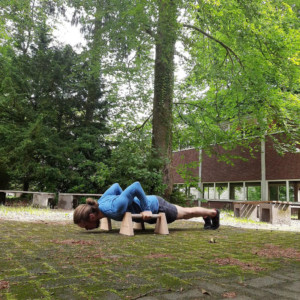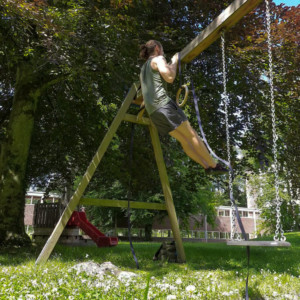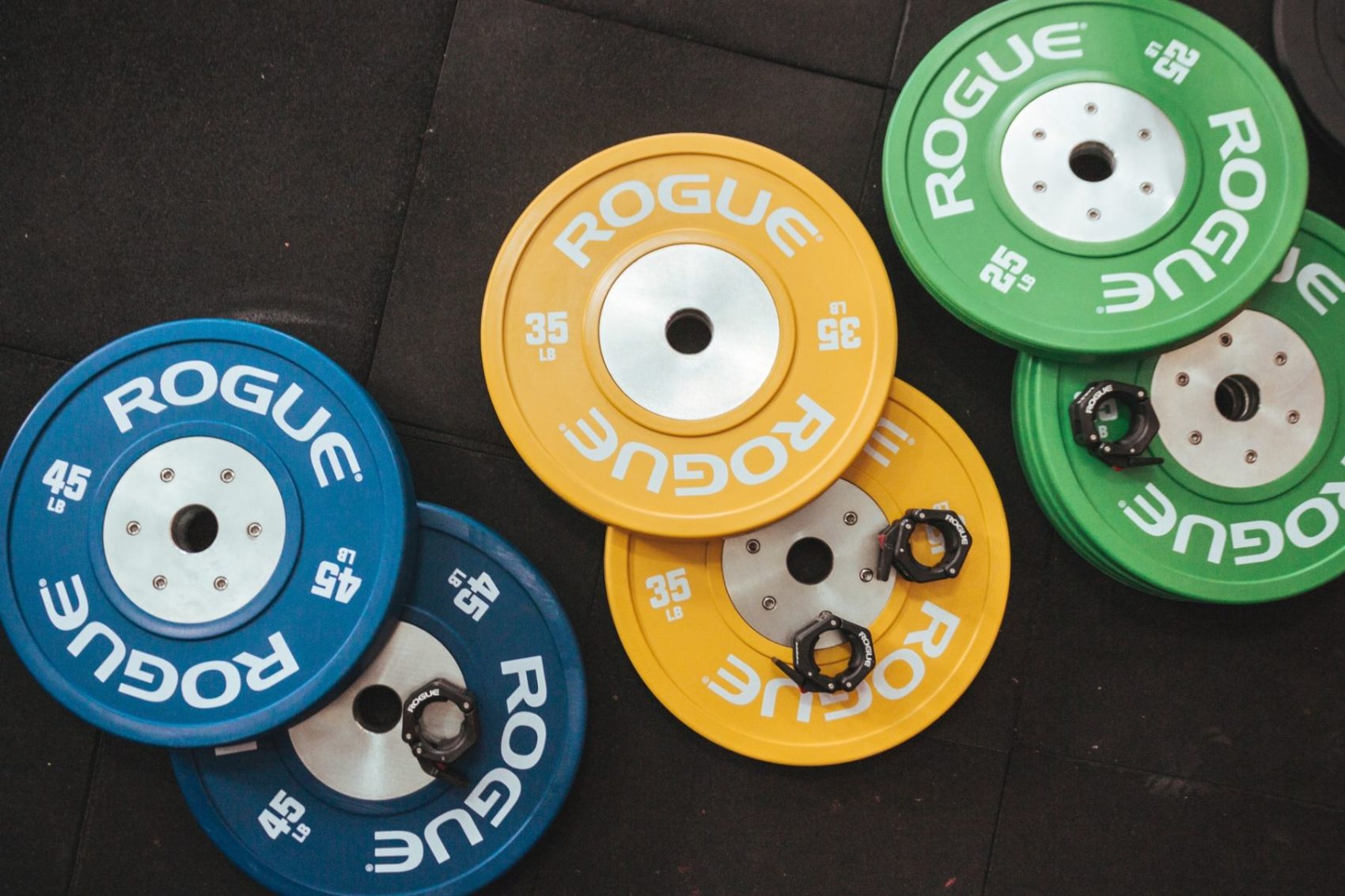I bet you’ve come across the push/pull/legs split somewhen across your training’s journey. Many folks structure their workouts using this principle!
It isn’t even calisthenics specific: even in traditional weightlifting, bodybuilding or among the bro’s throwing ’round weights at your local discounter gym’, this split is very common.
It is so for a reason:
- It is one of the most versatile training splits.
- It forgives mistakes
- Beginners, as well as advanced athletes, can use this split successfully
- It is rather simple to understand and use
…just to name a few!
Within this post we’ll have a close look at how this split works, how you can use it and a few off-topic thoughts on how to combine different activities.
If you are on the lookout for a well-designed push/pull/legs program in terms of calisthenics, have a look at my free beginner program. You can check out the first session here or subscribe to my newsletter to get the whole program as a comprehensible ebook directly in your inbox.
OK – enough self-advertising for today – I promise! Let’s dive into this interesting topic and see how you can utilize this split!
The basic Structure of a Push/Pull/Legs Split
As the name suggests – you structure your week around separate sessions:
- A push session, a pull session and a session for your legs.1
- Per session, you should choose around 4-6 exercises containing about 3-5 sets.
- The goal here should be to choose exercises for all movement patterns and work in every repetition range, depending on your goals.
Many things to consider for such a simple plan, isn’t it? But it sounds more complex than it really is. Stay with me!
Push

The main actor to play this role is called Push.
His workouts are all about the same-named movement pattern. It doesn’t matter if you push vertical or horizontal – as long as you push.
So what to train on these days?
As a calisthenics athlete, you could choose complex pushing exercises like pushups, inverted presses, dips, handstands, or planches.
Pushing sessions are very minimal, too. You solely need some space to do most exercises you need, that’s it. So grab yourself your favorite pair of parallettes* and get to work!
General fitness enthusiasts should choose exercises targeting their chest, triceps, or shoulder. Great examples here fore would be essentials like the bench or military press.
Pull
Likewise the previous day, you focus solely on the opposing movement pattern – Pull. More precisely, vertical and horizontal pulling patterns. Or let your biceps burn – that’s legitimate, too!
Great cornerstones of this day are pullups, chinups, different levers, and all variants of rows. Everything targetting primarily your back and biceps is legitimate.
For an awesome pull session, you need at least something like a doorframe bar* to pull up to, but resistance bands* come handy, too. Later on Gymnastic Rings are a good addition to any homegym setup.
Legs
Don’t skip leg day, bro!
Reread this. Your legs are important – and I see often calisthenics enthusiasts neglecting their legs. They say – their goals are primarily upper body focussed and heavy legs would hinder them.
But – who says you have to get big legs? I’d rather spend my time working on strong, explosive, and bendy legs. The bamboo legs like Ido Portal named them.
If you want to get big legs, that’s legitimate, too. My point is plain – spend time working out your legs, life isn’t upper body focussed either. To work your legs you need nothing fancy. Some space and maybe a box to jump onto will get the job done!
I would also do some ab exercises in this session, too. You can’t dedicate enough time working on a strong core.
So why choose the Push/Pull/Legs Split?
The Benefits of this Training Split
- The Push/Pull/Legs Split is very versatile. You can train with it 3x, 5x, 6x a week. One session can go for 45 minutes or 2 hours. That’s all up to your preferences.
I always like to say – there is a PPB split for everyone! - Beginners, intermediate and advanced athletes can make great progress with this kind of split.
- While trashing yourself can be done easily, it is hard to get into real overtraining.
Because there are always a few days between training each movement pattern your muscles should be fresh and energized.2
The Drawbacks of this Training Split
- Not all your muscles can strictly be differentiated into pushing or pulling muscles. Some do both or aid the prime movers to enable complex movements. 3
- Your core could take a harsh beating depending on your exercise choice. It is involved in every movement pattern. And if you chose to work planches, levers, leg raises, l-sits, deadlifts and squats – you will feel the effects on your core!
Therefore – be smart in your choice and prepare your core well for everything there is to come. - It is possible that your legs and mobility can fall behind if your are training them just for 1-2 times a week. Does that align with your goals or is it bothering you?
You can use the Push/Pull/Legs split on these Occasions
Three days
A great example of this choice would be to work out on mo/we/fr or as you wish. The biggest advantage of PPL is its versatility.
3 days of strength training are great for beginners, dudes with minimal time, or guys whose main endeavor is another activity.
One great example of this would be a soccer player, wanting to increase their performance and decrease their chance of injury. Or even the curling athlete – getting strong is never wrong. Life will crush the weak.
Five days
5 days to work out could be the next step for anyone prioritizing their strength work.

Don’t get me wrong here – there is a great potential for achieving results within 3 days of strength training, too. And I get it totally, that fitness is not everyone’s sole life. That’s totally fine.
I just want to point out that it makes a difference if you work out 2 or 6 times a week if you are really serious about it. It all depends on your goals and ambitions. *Rant over*
You could train this split for example on every workday and take the weekends off.
If you are new to working out this much – take it slow. 2 additional days are a lot of volume. And the saying – volume kills – is true. I can confirm that!
Six days
Six active days are something for ambitious strength athletes and guys with experience.
I would suggest working out mo/tu/we/th/fr/sa and having Sundays off, relaxing, doing some other activities, or caring for your outside-of-the-gym-life.
I like this split, because you got 2 separate leg sessions. Therefore you don’t have to squat and deadlift in one session. Let me tell you – if you go heavy on both – that’s no fun day. It’s a day you fear beforehand.
I would suggest going hard on the squats in leg session one and choosing some easy deadlifts – like one-legged, more technique focused variants.
In session two you reverse that and go easy on the squats and hit the deadlifts hard. Another cool idea to do one session both-legged and one session single-legged.
As you should know now – push/pull/legs training splits are freakin versatile. If I would write down every creative idea this one would get a reallyyyyy long post. Even for my standards.
How could one Example look like?
First, you need to define the basic thoughts – goals, frequency, volume, and your experience. Read more about the basics of programming here or dive into Thomas Kurz book* on programming.
With this information at hand, you know roughly how often to train and what to train.
Let’s say you want to build strength and got 3 days at your leisure – because you’re playing soccer on two others and that already covers most of your time:
That said you choose a 3-day push/pull/legs split:
- On Monday you train push, legs on pull and legs on Friday.
- This way you can go fresh into your soccer sessions on Tuesday and Sunday.
- Soccer with your legs scrambled from yesterday doesn’t sound that funny, isn’t it?
Now that you got the framework set you can construct each session. Read about that here in detail or have a look at Steven Low’s Overcoming Gravity*.

How to combine this split with other activities
Every one of us got limited time. And even worse – limited recovery capacities.
The goal here is to know your goals – and your WHY*. Although you might have many goals, I can’t stress enough that focus is as important as goal setting itself. I made the mistake chasing too many goals at the same time all too often and it cost me much time, spent more wisely on 1-2 of them.
When it comes to goals tunnel vision is appropriate.
Nevertheless, I will show you some clever methods to combine this or generally speaking, any other split with other activities. Because if well planned, your other activities and your whole life can benefit from strength training.
Skill work before your strength work
Work for 10-20 minutes on some specific skills you desire to learn before you advance into the sets and reps grind.

While this part is optional for many, it makes sense if you wanna learn something specific – like a handstand.
Therefore, it is really important to know what is a skill and what’s not:
Skills are exercises with high technical demands, requiring some baseline strength. They are no walk in the park, neither should they trash yourself. Above all, they need your concentration and tons of repetition.
The previously named handstand is a great example. For most – the move shouldn’t be hard work. It takes some courage to go upside down, but once this is successfully done and you know how to bail, it just takes some medium effort. What it takes it tons of time to achieve it.
For some planche work could be skill work, too. For the strong ones who can hold the positions properly. While for others the same work would be max effort. You can learn more about skills here.
Other examples of skill work, could be:
- Cartwheels, Au Cortado, Kicks (B-Kick, J-Kick, Tornadokick,…)
- Crow/Crane
- all kinds of hangs (one arm hang, meathook,…)
- balance work, squats
- rolls, spins, flips
- all kinds of handstand (plus entries and exits).
But as previously said – much depends on your very own level. It’s the same with warmups – some use pullups as a warmup for others it’s a max effort goal.
Get out of your normal gym routine
What would you say to a cycle climbing and escaping your normal pull routine?

I love to do this from time to time. Although I love calisthenics – highly repetitive work can get annoying, too.
You could also swap your normal push work and hit the weights* instead hard. Get some serious bench press and military press!
Sometimes stepping out of your comfort zone is all it takes to spice everything up. And as much I love climbing – It could never be all I do. After a few months, I am more than happy to come back to my beloved practice.
Is there something you would like to try out, but never found time for? Acrobatics? Handstands? Sprinting? Or whatever clings with you!
Strength training to support your main activity
Not everyone wants strength training to be his life’s center. I truly understand that. Or maybe another activity is your main and strength work is merely a means to support it.
I would say – spend as much time as possible on your beloved activity and spice your routine up with 2 full body sessions per week. Because runners, boxers, tennis players, and many others can definitely benefit from strength work.
Clever strength and mobility work can decrease the chance of you getting injured and toughen your body up against many stressors of life.
Getting strong is never wrong – as the saying goes,

Sources and further reading
- Antranik is one cornerstone in the online world of bodyweight training. Every one who stumbled upon Reddit will know his work. If not – take a look around this community. – Top tip!
- This routine by Al Kavadlo is one great push/pull/legs split. Take a look at his work, if you are in calisthenics!
- MyProtein’s blog has many tasty recipes and some useful information when it comes to basic training knowledge. Take a look at their post about general splits.
- The blog T-Nation at which the bodybuilder Christian Thibaudeau sometimes writes, is a great starting point for basic training knowledge, too.
- If you really wanna dive into this topic have a look at the three books:
– by Steven Low on Bodyweight Programming* in general
– Peak Performance by Thomas Kurz*, on programming on a day to day basis
– or the classic Muscle and Strength Pyramid by Eric Helms*
Footnotes
- Other famous alternatives would be for example a full body split or the upper/lower split. Plus a myriad of others, ranging from ‘really creative’, to ‘useful in some conditions’, to ‘complete crap, expect you shoot yourself a nutjob dose of roids’. You can read about some great alternatives in this post by T-Nation.
- I must say – if you totally trash yourself while your push session (and I mean TOTALLY) the next day can suck, even if you are training completely different movement patterns.
I would suggest pushing through the initial pain, it will get better. If it doesn’t. Stop, make some light work and overthink if trashing yourself that hard is worth it. I had this conversation many times with myself. - For example your lats, and the lot of muscles surrounding the scapula are real allrounders. There are even exercises hitting your back/triceps in that combination – like for example overhead pulls. The human body can sometimes be simplified and it is true. But there are also excuses to that rule.



